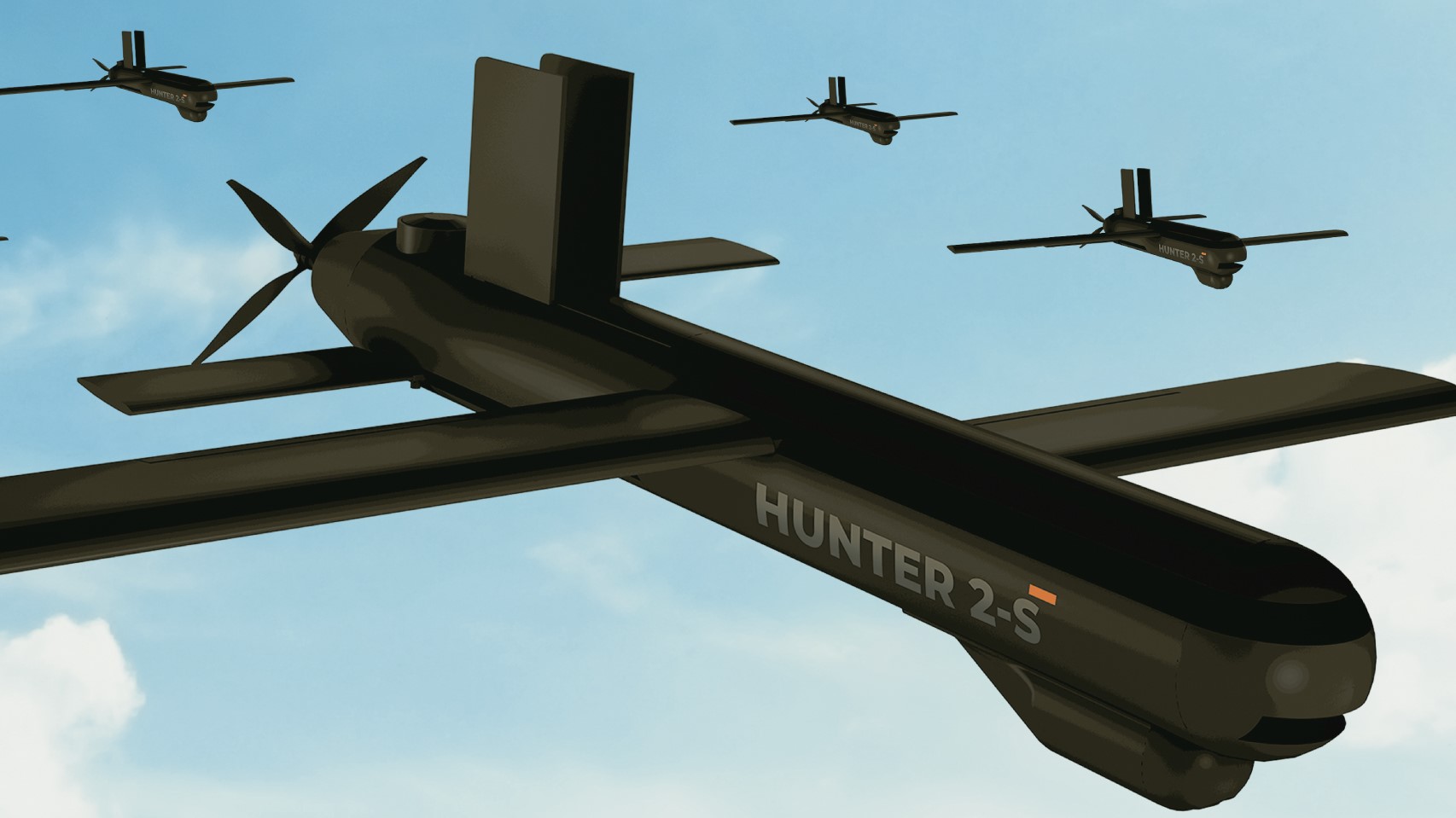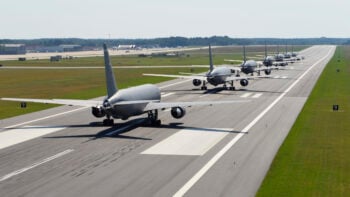
The Hunter 2 drone from HALCON is now capable of swarming, the company announced Monday. (EDGE Group)
UMEX 2022: HALCON, a regional leader in the production and supply of precision-guided weapons and unmanned aerial vehicles (UAVs), revealed a swarming drone capability on the first day of the Unmanned Systems Exhibition and Conference (UMEX) in Abu Dhabi.
The drones, based on the Hunter 2 series UAV, will use artificial intelligence technology to share information with each other and to fly in a steady formation towards their target, HALCON CEO Saeed Al Mansoori told Breaking Defense.
“Once the target is identified, a decision is made among the swarm, and based on the target size, shape, and category, they decide how many drones are needed to destroy the target, like two or four or five, and then they start diving towards it,” Al Mansoori said Monday.
The swarm can attack both static and moving targets, and can carry out complicated missions, Al Mansoori added.
“The drones are equipped to operate at cruising speeds that support mission success, with a significant communications range and healthy flight endurance. The winged UAVs can be deployed in a matter of seconds, featuring a wingspan of 1.44m and a length of 1.25m,” according to a company press release.
Hunter 2-S Swarming Drones – proudly #MadeintheUAE for a #FuturePossible. pic.twitter.com/ewNkaYgbXn
— EDGE (@_edgegroup) February 21, 2022
HALCON is part of the EDGE group, a conglomerate that is the main defense technology powerhouse for the UAE.
“HALCON is a player is the low-to-medium technologies and we are a leading company in that area, and the UAE military is our main customer and we are meeting all of our customer’s requirements,” Al Mansoori said, pointing out that the company is seeking to help achieve the UAE’s goal of military self-sufficiency in defense requirements.
Al Mansoori added that HALCON will enter all “weapon sectors,” covering land, air, and sea.
While UAVs are the leading unmanned technology, Al Mansoori noted that the market has an increased demand now for land-based autonomous systems. In the future he expects to see “some anti-tank unmanned vehicles and also artillery mounted on unmanned vehicles, especially with target-identification technologies. So, the land systems are catching up with aerial vehicles.”
“The technology is now allowing systems to become smaller and cheaper, which will enable the development of a wide range of autonomous systems for air and land,” Al Mansoori said.






















